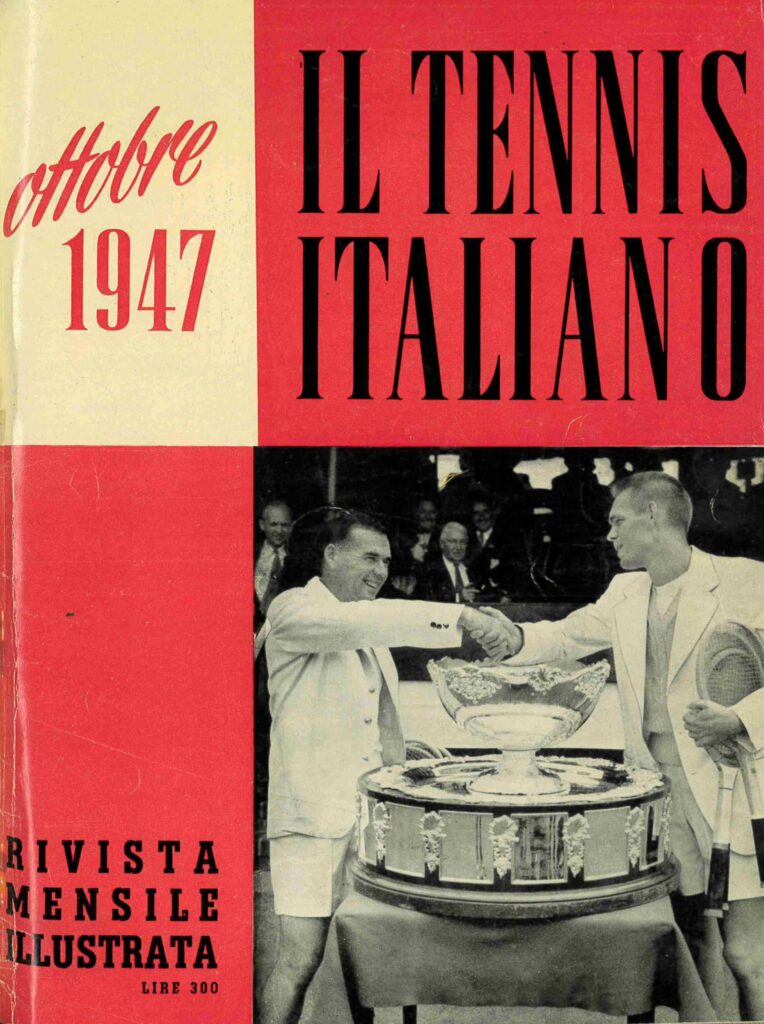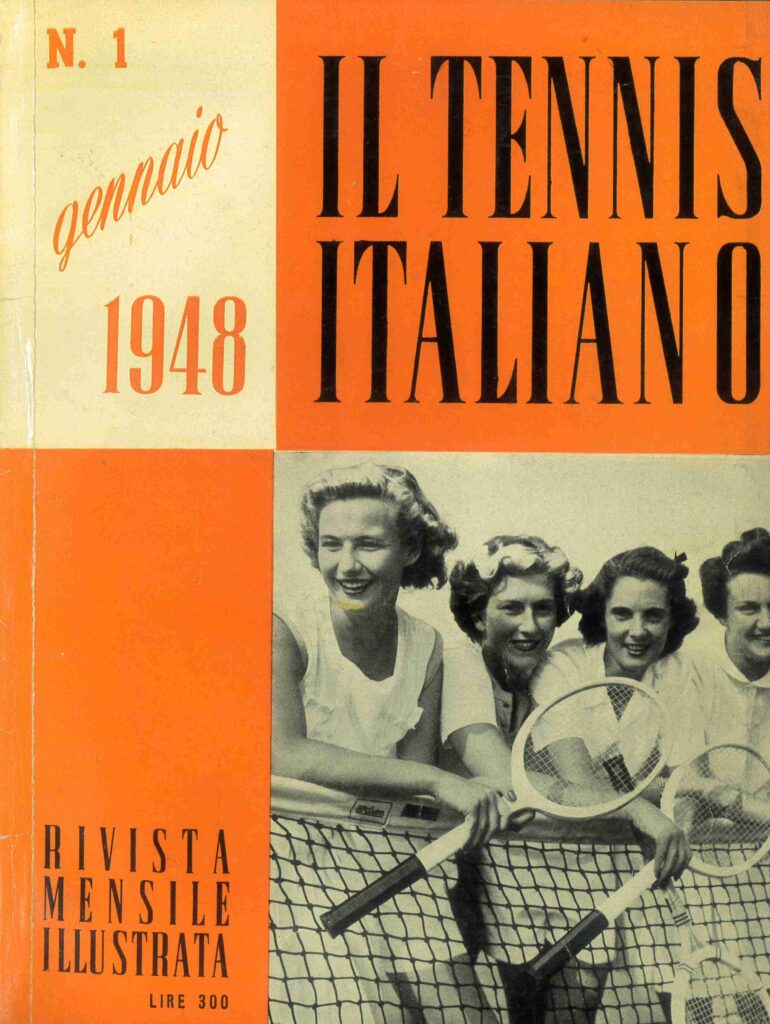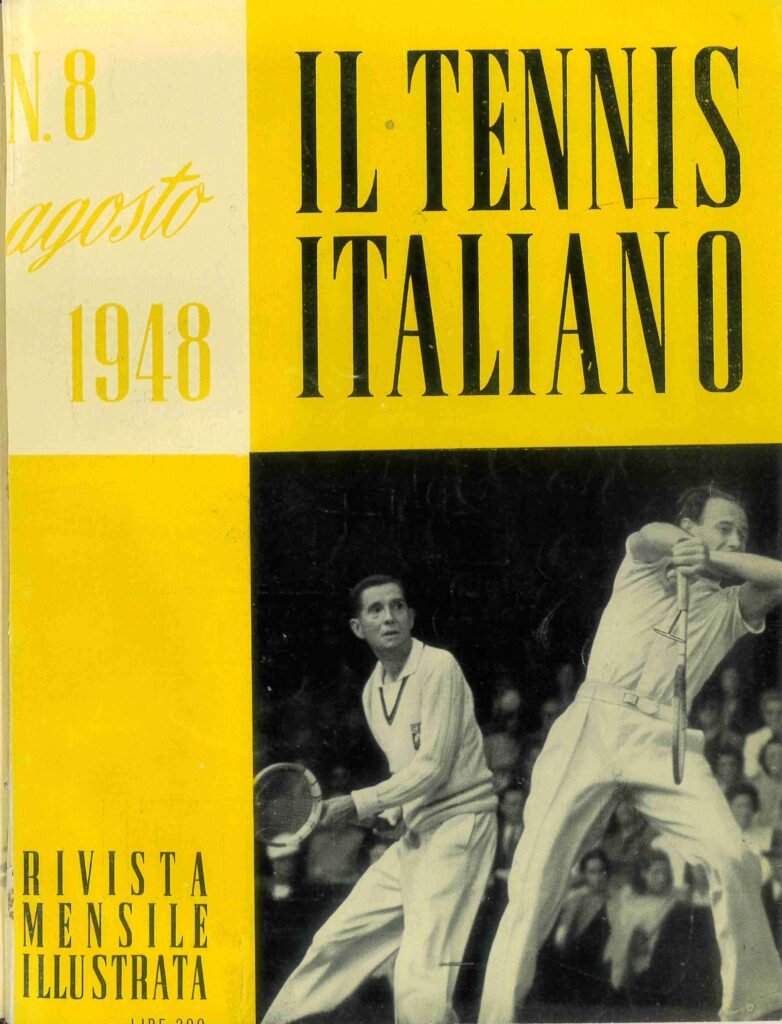The young poet of «Il Tennis Italiano»
June 6, 2024: it has now been two years since the passing of Gianni Clerici, one of the most refined and irreverent voices in the history of Italian sports journalism. His precious book collection, donated to the Università Cattolica of Brescia in June 2023, has since been fully cataloged and is available to anyone wishing to study the fascinating figure of this intellectual from Como.

The career of the “scribe,” as Gianni liked to jokingly call himself, took off with an article published in the monthly magazine Il Tennis Italiano. It is precisely from this very first journalistic writing experience that we want to start to revive his memory. It was August 1948, and the eighteen-year-old Clerici, in the midst of his rise as a tennis player, had the opportunity to try his hand as a special correspondent for the second-category championships. In the introduction written by the then editor of the magazine, Umberto Mezzanotte, we already read about the curiosity and high hopes Gianni had been able to arouse with his captivating writing style:
“Gianni Clerici, a young tennis player, makes his debut with this article as a contributor to our magazine. Evidently, Guido Rocca sets the example with his bright, carefree journalism, a somewhat new genre, and we are very happy to ‘make way for young people’ in the use of the pen as well; hoping that Gianni Clerici, after this first experiment, will continue to contribute to our magazine” [fig. 1].
This hope was not disappointed: the partnership between Clerici and Il Tennis Italiano remained active for several seasons, until in 1951 the Como native, enticed by the flattering offers of Gianni Brera, moved on to La Gazzetta dello Sport.

Returning to his debut article, it is clear how the pages of the magazine struggle to contain the overflowing talent of Gianni’s pen: a talent that bursts beyond the margins and reveals his desire to go beyond mere reporting. With a sharp and never banal irony, Clerici paints contemporary scenes of society and customs, narrating the daily life of those who revolve around the tennis world and those who are an integral part of it. Just reading the opening lines of the piece gives an immediate idea of what Clerici would be capable of in the years to come:
“I preface. It is not my intention now to bring up Jupiter Pluvius [the god of rain], because this has become the ‘slogan’ repeated in all tennis tournament reports. However, I would like to offer a piece of advice from the pages of this magazine to the Tennis Como officials. The advice is this: never again ask the Italian Tennis Federation to organize the Second Category Championships as long as, going through a period of great drought, the burnt earth and thirsty men will only ask for water, water…”
Clerici’s unmistakable style — sharp irony, inevitable sarcasm, anecdotes, and digressions — is what made him famous and acclaimed in journalism and marked both his career as a TV commentator and as a writer of novels, poetry, and plays.

Gianni certainly knew a thing or two about theatrical timing and comedic beats. This is evident in the closing lines of his very first article, which read: “I humbly apologize […] for the decidedly unfunny style in which I wrote this. But believe me, it’s not my fault. The fault lies with the Editor, who could very well have sent to Como for the ‘second category’ Championships the best pen of Italian sports humor journalism. I won’t say more, because I… don’t like duels.” Another frequent device in Clerici’s writing is undoubtedly self-irony. He describes his own scruffy appearance in a caption under a candid photo taken in Padua during the Coppa Pin in November 1948: “The two longtime Padua players Romanin and Bertin, with their opponents Clerici and Scaunich. Gianni Clerici’s pose in this photo is strange! He looks like he just stepped out of a penitentiary…” [fig. 2]. Some of his memorable similes have become part of the collective imagination of tennis fans. Referring to Gardini, for example: “Fausto was his usual self, clinging to the ball like a bulldog to a chicken thief’s pants”; or again: “when he rushes to the net with his head down, he looks like a bull aiming to gore with the pointed horn of his almost-famous forehand volley.”

In addition to having welcomed and supported the early career of the very young Clerici, Il Tennis Italiano, with over ninety years of activity behind it, represents the oldest specialized magazine in the world. Available at newsstands and bookstores since 1929, first under the name Tennis and then as Tennis. Winter sports , the magazine, currently edited by Stefano Semeraro, stands as one of the most authoritative voices in the world of sports. Starting with issue number 1147 in November 2023, the first edition published after a complete redesign, the magazine is released bimonthly by the publisher Fandango Libri and features contributions from writers and artists passionate about tennis, alongside sections dedicated to news and in-depth analysis.



Giuseppe Cosio

